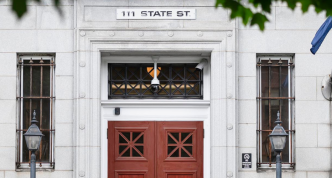According to the Centers for Disease Control and Prevention, up to 1 in 4 adults (24%) in Vermont have some type of disability. The most common disability types are related to mobility and cognition.
About the Americans with Disabilities Act and the Rehabilitation Act
The Americans with Disabilities Act (ADA) is a federal civil rights law that prohibits discrimination against people with disabilities in everyday activities. The ADA prohibits discrimination based on disability just as other civil rights laws prohibit discrimination based on race, color, sex, national origin, age, and religion. It guarantees that people with disabilities have the same opportunities as everyone else to enjoy employment opportunities, purchase goods and services, and participate in state and local government programs.
The Rehabilitation Act prohibits discrimination based on disability in programs conducted by federal agencies, in programs receiving federal financial assistance (i.e., grants and contracts), in federal employment, and in the employment practices of federal contractors.
Visit the ADA.gov website for an overview of federal civil rights laws and answers to common questions.
For questions about the ADA, call the U.S. Department of Justice ADA Information Line at 800-514-0301 (voice) or 1-833-610-1264 (TTY). Accessibility specialists are available to answer questions from individuals, businesses, and state or local governments. All calls are confidential.
About the Architectural Barriers Act (ABA)
The Architectural Barriers Act (ABA) applies to facilities designed, built, altered, or leased with federal funds. Passed in 1968, the ABA is one of the first laws to address access to the built environment. The law applies to federal buildings. It also covers non-federal facilities built or altered with federal grants or loans. Coverage is limited to those funding programs that give the federal agency awarding grants or loans the authority to establish facility standards.
While the ADA and ABA are very similar, there are also some differences between what the ABA standard requires for accessibility and what the ADA standard requires. According to the U.S. Access Board, the ABA and ADA Standards are different in these areas,: modifications and waivers (§F103), work areas, additions (§F202.2), leased facilities (§F202.6), exceptions for vertical access/elevators (§F206.2.3), emergency transportable housing (§F233, §809), and outdoor developed areas (§F244 - §F248, §1011 – §1019). The ABA is more restrictive than the ADA for some requirements.
When reviewing federal funded grant agreements, it is advisable to pay attention to the grant conditions as to whether the ABA or other accessibility requirements apply. USDA Rural Development uses ABA for its Community Facilities program, whereas the Department of Transportation and the Department of Justice have provisions in their specific ADA Standards that are not found in ABA Standards.
Visit the U.S. Access Board’s Architectural Barriers Act website for information about ABA accessibility standards. The Guide to the ABA Accessibility Standards explains requirements, recommends best practices, and provides animations to explain some concepts.
For questions about the ABA Standards, contact the U.S. Access Board at 202-272-0080 or ta@access-baord.gov. Accessibility specialists are available to answer questions.
About the Vermont Access Rules
Vermont law has required that new construction, additions, and alterations in public buildings be accessible to people with disabilities since 1977. In some cases, Vermont law exceeds the requirements of the ADA. Vermont law is codified at 20 V.S.A. Chapter 174: Accessibility Standards for Public Buildings and Parking.
The Vermont Access Board adopts rules on technical requirements for accessibility to public buildings. The Board also has Legislative authority to hear and grant variances from provisions of Vermont Rules. The Vermont Access Rules are available from the Division of Fire Safety, which enforces the Rules.
Disclaimer: Information contained in this toolkit is intended only to provide an overview, not legal advice.
- Information about the Americans with Disabilities Act and the Rehabilitation Act is from the Guide to Disability Rights Law. Readers can learn more about the full requirements of these laws on the ADA website.
- Information about the Architectural Barriers Act is from the U.S. Access Board. Readers can learn more about the full requirements of these laws on the Access Board’s ABA website.
- Information about Vermont’s accessibility law is from the Division of Fire Safety. Readers can learn more about the full requirements of Vermont laws on the Division’s ADA and Accessibility website.


